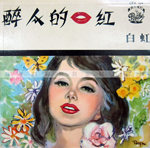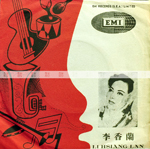In 1949, a whole group of multi-talented stars moved from Shanghai to Hong Kong. Mando pop rose to prominence, rivalling the presence of Canto opera music and Canto pop in a short period of time. The young Wong Jum-sum frequented radio stations and recording studios with his harmonica band members, in that process encountered in person many of these Mando pop stars and maestros, including illustrious names like Li Xian-lan, Bai Guang, Yao li and Yao Min. He also regularly collaborated with Filipino musicians who once illuminated the nightclubs of Shanghai.
These stars and musicians created a reservoir of Mando pop songs in the 1950s. The latter formed an inexhaustible treasure trove for radio music program presenters of the time.

The first generation of Mando pop singers came from Shanghai.
Mando pop first grew up in Shanghai in the 1920s. In the concession territories of Shanghai, there emerged a new style of music that combined the dance beat and harmonic thinking of western pop music with the local ballad tradition. Mando pop brought a new sound world, supported by new cultural venues and practices like nightclubs, gramophone records and radio broadcast. In time, the sound became the signature tune for the onward march of China modern itself.













































